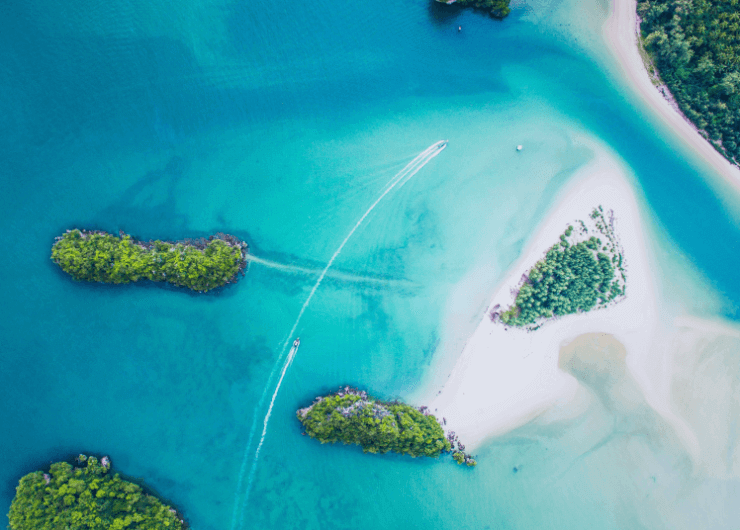Cultural, historical, adventure, and custom customized trips are just a few of the tours that Deluxe trips offer in Egypt and Jordan.

The International Museum of Nubia was opened after the UNESCO-sponsored campaign that started in the 1960s to preserve Nubian monuments under threat from the Nile flooding after the completion of the Aswan High Dam. Egypt's government, with the assistance of UNESCO and national experts, commenced work, taking a start in the early 1980s. The museum officially opened on 23 November 1997.
Covering a total of approximately 7,000 m² of building space over a 50,000 m² garden, the museum was designed by architect Mahmoud El‑Hakim, interior exhibit design by Pedro Ramírez Vázquez. Construction work was estimated at E£ 75 million (about US$22 million in those times).
It received the highly regarded Aga Khan Award for Architecture in 2001 for its considerate combination of modern design with Nubian classicism.
The Nubian Museum is located in The Beauty of Egypt Aswan City, in southern Egypt. Perched on a hill overlooking the Nile River, it offers stunning views of the surrounding landscape. The museum is situated just a short distance south of Aswan’s corniche, within easy reach of the city center and other famous landmarks such as the Old Cataract Hotel and the Secrets of Philae Temple in Egypt, making it a convenient and must-visit destination for travelers exploring Nubian culture and history.
Stood on a hill with overseeing views of the Nile, the museum itself is built of sandstone and pink granite in balmy desert tones. Its motifs of architectural design—arched windows, domed roofs, terraces—echo the vernacular style of ancient Nubian villages and blend harmoniously with the terrain.The grounds span 43,000 m² and feature an open-air exhibit with water channels symbolizing the Nile, an outdoor amphitheater, a reproduction of a Nubian village street—with houses, workshops, and gardens planted with regional vegetation—and prehistoric rock inscription caves.The museum holds over 3,000 artifacts ranging from prehistoric, Pharaonic, Roman, Coptic, Islamic, and Nubian times, and local Aswan history.
Prehistoric items like ancient human skeletons and cave inscriptions.
Pharaonic items such as statues of Pharaonic rulers like Ramses II, stelae, ceramics, tools, and jewelry.
Collections of the Kingdom of Kush, significant Nubian monarchs like Piye and Taharqa, and items covering ancient Nubian civilization
Christian and Islamic Nubian artifacts, proof of long continuity in Nubian civilization
Ethnographic exhibitions of traditional dress, crafts, music, and daily life, supported by live demonstrations of weaving, pottery, and playing of local music and dances
A special section titled "Treasures of Nubia", comprising saved fragments and monuments relocated during the High Dam project, including remnants of temples like Abu Simbel and Kalabsha.
The museum is significant not just for the storage of artifacts, but also for raising awareness and knowledge about Nubian heritage. The museum hosts a library, lecture hall, and educational department and conducts regular workshops, cultural evenings, and performances in which both local and international audiences are involved
It is a community museum—Nubian communities are engaged through outreach, school visits, and research programs to ensure respectful representation and continuity of living culture.
To learn about the multilayered past of Nubia, for too long shrouded in general Egyptian records.
To view unique archaeological finds, ranging from prehistoric tools to royal statues, rescued temple remains, and artifacts of everyday life.
To admire a model piece of architecture that reflects Nubian heritage while meeting modern exhibition standards.
To delight in cultural performances and craft demonstrations that bring Nubian traditions to life.
To witness serene gardens and outdoor displays that blend environment, art, and memory into a single visitor experience.
October to April gives Aswan cooler weather, ideal for viewing both indoor and outdoor sections of the museum comfortably.
Nubian Museum is not only a building that contains artifacts, but an enduring reminder of a lost world amidst the din of time. It contains not only irreplaceable heritage, but Nubia's resilience, creativity, and living culture. For the historian, for the traveler seeking detailed culture, or the researcher examining lesser-known pages of African history, this museum provides an unforgettable, experiential journey through the centuries.
It is not just a journey into the past but a bridge necessary to one of Egypt's oldest and most significant cultures through a visit to the Nubian Museum.
Discover now our answers to the most common questions that may come to your mind about tourism and trips to Egypt
Cultural, historical, adventure, and custom customized trips are just a few of the tours that Deluxe trips offer in Egypt and Jordan.
The Dead Sea, Petra in Jordan, the Pyramids of Giza, Luxor's historic temples, and many other famous sites can be expected to be explored with Deluxe Tours.
offer a hassle-free holiday, Deluxe Tours' packages generally include lodging, transport, meals, guided tours with experienced local experts, and entry fees to attractions.
Spring (March to May) and fall (September to November) offer the finest weather for sightseeing and outdoor activities, making those months the best times to visit Egypt and Jordan.
These two countries are close by, only a 1.5-hour flight apart, and when combined, offer a variety of distinctive experiences. We advise you to spend at least 12 days visiting both countries for a truly unforgettable experience
Combining the eclipse viewing with visits to historic sites like the Pyramids of Giza, the Valley of the Kings, and a Nile River cruise are highly recommended.
